Posted by Managementguru in Economics, International Business
on Feb 16th, 2014 | 0 comments
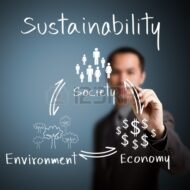
Economic Growth Strategies A Purview on Economic Growth Strategies for Developing Countries A developing country is one where the per capita income is low relative to that of fully developed countries. In human terms developing countries typically have major population percentage with poor health, low levels of literacy, inadequate dwellings and meager diets. The key to development rests on four fundamental factors namely human resources, natural resources, capital formation and technology. Human resources: A lot of poor countries are forever running hard just to stay in place. Even as a developing nation’s GDP rises, so does its population. So it becomes a mammoth task for such nations to overcome poverty with birth rates so high. Equitable distribution of wealth cannot happen in an economy unless and until it becomes self sufficient. One strategy will be to curb the population, even if such actions run against prevailing religious norms. Strategies for Developement Economic planners in developing countries lay great emphasis on the following strategies of development with regard to human capital: Control disease and improve health and nutrition Improve education, reduce illiteracy and train workers Above all, do not underestimate the importance of human resources. Literate people are knowledgeable and resourceful; their analytical skills help them to weigh the pros and cons of specific social situations that affect their standards of living. Asian countries like India and China with exploding population figures are in a situation to invest their human capital for productive purposes. Pinning Your Way to Profit With Pinterest Natural Resources: Some developing nations with meager endowments of natural resources such as land and minerals have to divide the available resources among the dense population. Perhaps the most valuable of all the resources would be arable land, as most of the people in developing countries employ themselves in farming, which is the primary economic activity. Hence the productive use of land with appropriate conservation, fertilizers and tillage will go- far in increasing a poor nation’s output. More over land ownership patterns are a key to providing farmers with strong incentives to invest in capital land’s yield. When farmers own land, they are more willing to make improvements, such as irrigation systems and undertake appropriate conservation practices. The governments have to think in these lines if their economy is based on agricultural activity: Farmers should be appraised about modern farming techniques and provided with farming equipments and fertilizers at subsidized rates. Note:-nothing should be given as free as freebies make them lethargic and unmotivated. Much of cultivable lands are being destroyed for commercial purposes which have to be checked. Power generation and supply should be copious and uninterrupted as farming, solely is dependent on availability and usage of ground water. Pumping of water is done through jet pumps and electric motors. Budding population can make a marked difference in the field of farming, as it is impossible for a nation to generate white collar jobs for everyone and it definitely elevates the capacity of youth from being mere employees to that of owners. Organic farming has found a place for itself in international market and human capital of developing nations can be employed in research and development of new strains that will facilitate to capture the global market. Capital formation: Rates of productive capital formation are low in developing countries because of deprived income; little can be saved for the future. The financing of growth in poor countries has always been an unstable link in the productive mechanism. Countries should definitely have a balanced and cautious approach when they plan to finance ambitious development programmes as they will be forced to borrow heavily from other developed countries or the World Bank. Technological change and innovations: This is...

Posted by Managementguru in Economics, Human Resource
on Feb 16th, 2014 | 0 comments
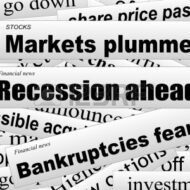
Key Issues of Unemployment Stats: The population of India has increased by more than 181 million during the decade 2001-2011. The population of India, at 1210.2 million, is almost equal to the combined population of U.S.A., Indonesia, Brazil, Pakistan, Bangladesh and Japan put together (1214.3 million) Important questions relating to unemployment The unemployment rate in India is estimated at 9.4 percent or 94 persons out of 1000 persons How can millions of people be unemployed when so much of work has to be done? What flaw in the modern mixed economy forces so many who want to work remain idle? Should nations take steps to alleviate the hardships of joblessness? Do high unemployment benefits just reduce the incentive to work and end up raising the unemployment rate? These questions always come up every time there is a rise in the unemployment ratio. Unemployment continues to plague the modern world. Another reason which can be attributed to unemployment is that, there exist a lack of correlation or can we call it a ‘mismatch’ between the subject of study and the line of action. It has been stated that for every two percent fall in the GDP, there is one percent rise in unemployment rate. The association between the output market and the labor market can be clearly understood from this statistics. Economic as well as a social problem Unemployment is not only an economic problem but also a social problem. As an economic problem, it is a waste of valuable resources. As a social problem, it is a source of enormous suffering, as unemployed workers or workers who are temporarily employed suffer and struggle due to reduced incomes. The distress spills over to affect people’s emotions and has a direct impact on their family lives. A mismatch between the supply and demand of workforce also can create what is called as structural unemployment. This can happen because the demand for one kind of labor is rising while the demand for any other kind is falling and supplies do not quickly adjust. Cyclical unemployment is another kind, where the overall demand for labor is low. Picture Courtesy: Businessinsider Recession We have seen that unemployment and recessions impose great costs on societies. Yet countries do not attempt to reduce unemployment to zero or even close to zero. Moreover when output approaches its potential, the central banks often begin to raise their interest rates and slow the expansion. Just why is that, countries don’t stimulate their economies until involuntary unemployment disappears? The reason is that super-full employment leads to shortage in labor and product markets and soon inflation would rise to intolerable levels. Business Cycle Business cycle is one of the key issues of macro economics. The economic pattern of a country never follows a smooth trend. Several years of economic prosperity will be followed by a sudden recession or a panic. Then the national output falls, real income declines followed by a jump in unemployment rates to uncomfortably high levels as legions of workers lose their job. Eventually the bottom is reached and recovery begins. There exist many theories to explain the cyclical pattern of an economy but none is valid at all times and places. Governments have to anticipate recessions and stop them from snowballing into depressions. Crude oil price is an important economic indicator for developing nations which helps them to predict the fluctuations in the business cycle that is to follow. Related Posts: 1. How to Make Money Selling Anything and Everything 2. Photoshop CS6 Crash Course...

Posted by Managementguru in Economics
on Feb 16th, 2014 | 0 comments
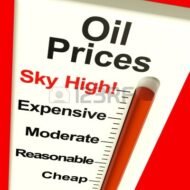
Monetary and Fiscal Policy Countries worldwide are concerned about the following issues while setting up monetary and fiscal policies; namely, the appropriate level of aggregate demand and the best blend of monetary and fiscal mix. Monetary policy focuses on the movement of money within the country, the inflow of foreign exchange and varying interest rates fixed by the Reserve Bank. Fiscal policies are concerned about stabilizing the economy and handle public revenue, expenditure and debts. The pattern of resource allocation and distribution of income affect the drafting of fiscal policies. Monetary policy is very well restricted by the government’s decision on public expenditure and taxation. The tactical combination of both will help determine the composition of GDP. The purpose of monetary policy: The purpose of monetary policy is to ensure availability of credit to the productive sectors of the economy and also regulation of money supply. Econometric models, which use statistical techniques to assess the impact of monetary policy changes on the macro economy, usually find that changes in money supply have a major impact on production in the short term, with greater impact on the proportion of nominal GDP in terms of wage and price inertia as time progresses. Annual budgets are always a nightmare for the common people as tax imposed on commodities has a say on their disposable income. For example, if the price of crude oil is on the rise, the government can do nothing but to increase the fuel prices. Inflation leads to an increase in interest rates charged by banks nationalized or private, affecting small-and medium-scale business firms. Some terminologies related to monetary policy: Let us get ourselves familiar with some of the terminologies in connection with monetary policy. This may help you to understand the subject in a better way. Repo rate: Rate at which RBI lends to other banks against securities Reverse Repo Rate: Rate at which RBI borrows from other banks Cash Reserve Ratio (CRR): Amount of money to be set aside by the banks with RBI against their deposits Statutory Liquidity Ratio (SLR): Percentage of bank funds to be maintained in government securities Capital Adequacy Ratio: Capacity of banks to work within the time line and risks. Bank Rate: Minimum interest rate at which the Central Bank offers commercial loans to other banks Inflation: Steady rise in prices of commodities Money Supply: Sum total of money circulating in the economy Money flow, policy variables and liquidity conditions have a direct bearing on savings, investment, consumption, inflation, employment and GDP.The ability of a country to improve its standard of living over time depends almost entirely on its ability to improve technology and capital used by the workforce. In short, the budget deficit should be reduced, which guarantees the rate of national savings and increased purchasing power parity (PPP). Main objectives of monetary policy: There have been changes in the objectives of monetary policy from time to time and vary from country to country. Sometimes the monetary policy adopted by a country may have different objectives, which are contradictory. In such cases, the country may have to compromise by setting the priorities. Some of the main objectives of monetary policy: • Price stability • Exchange rate stability • Full employment • High rate of economic growth • Equitable distribution of income Main objectives of Fiscal Policy: Post the Great Depression of the 1930s, it was well realized that governments should actively participate in economic activities to achieve economic growth and equity, through sound fiscal policies. The purpose of fiscal policy lies in: • Achieving full employment • The maintenance of stability • Increasing the rate of capital formation • Development of a model of...

Posted by Managementguru in Economics
on Feb 16th, 2014 | 0 comments
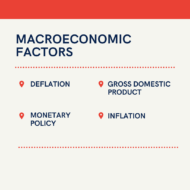
Science of Macro Economics: Macroeconomics is the branch of economics that studies the behavior and performance of an economy as a whole. The part of economics concerned with large-scale or general economic factors, such as interest rates and national productivity. The sales and profit quotient of business enterprises in a market is dependent on the vigor of the overall economy to a greater extent. During expansion, the real GDP can accelerate to 4 to 5 % a year and during recessions the pace of growth declines for an extended period. The overall economic growth is subject to many cyclical fluctuations and the reasons for change in the pace and pattern of economic scenario still remains a mystery. Macroeconomic Concept What are the fundamental concerns of macro economics? Business Cycles: Business cycles are rhythmic patterns of expansion and contraction due to inflations and recessions. It is still an intriguing factor that unemployment persists even during times of expansion and production of goods and services fall down during cyclical downturn making millions of people lose their job. If macroeconomics can find the appropriate solution to these problem situations, better will be the prospects of many people’s lives and fortunes. Monetary and fiscal policies should be formulated in the light of reducing the severity of business cycles. The purpose of monetary policies is to stabilize the prices by managing the expansion and contraction of the volume of money in circulation, full employment and stability of exchange rates. Fiscal Policy: Fiscal policy is linked with the government’s stand on public revenue, expenditure and debt. The idea is to reduce inequalities in income and wealth and develop a socially optimum investment pattern. Resources available in a country influence the kind of investment pattern. Developing countries like India has its focus of activity centered on telecommunication and power generation through information technology and alternate fuel resources. Availability of skilled labor is an additional plus in countries like India and China and many countries prefer to outsource their business processes to offshore companies present here. Tax Structure: Tax structure is a source of revenue generation aimed at economic stability. During inflation, an increase in tax rates will reduce the buying power of people thereby reducing the prices in the economy. A reduction in tax rates during depression will encourage economic investment and consumption. Generous subsidies and reforms in industrial policies alone cannot bring about the desired growth in the economy. A nation should aspire to increase its growth ratio by providing the necessary infrastructure. Economic scholars of each nation have to vigilantly analyze the previous patterns of business cycles for the benefit of the society and this kind of review will lead to dependable forecasts on the basis of which proactive measures could be devised. Note: What is VAT: VAT is a multi-point levy where the tax paid on local purchases from the registered dealer can be set off against the tax payable on the sale of goods, other than special...

Posted by Managementguru in Economics, Financial Management, Management Accounting
on Feb 14th, 2014 | Comments Off on Concept of Cost
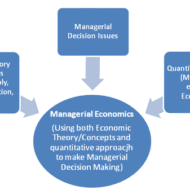
Cost-A Key Concept in Economics for Managerial Decision Making The concept of cost along with demand and supply constitute three of the basic areas of managerial economics. Analysis of cost is essential when it comes to large-scale production, where the firm is in a position to factorize the economies of scale. For a profit-maximizing firm, the decision to add a new product is done by comparing additional revenues to additional costs associated with that project. Aids in Decision Making Decisions on capital investment are made by comparing rate of return on investment with the opportunity cost of the funds used to make capital acquisition. Costs are equally important in non-profit sector. For example, to obtain funding for a new dam, a government agency has to demonstrate that the value of the benefits of the dam like flood control and water supply, will exceed the cost of the project. It is necessary that we define the term ‘cost’ for better understanding. The traditional definition tends to focus on the explicit and historical dimensions of cost. In contrast, the economic approach to cost emphasizes opportunity cost rather than historical and includes both explicit and implicit costs. Opportunity Cost: Opportunity costs are fundamental costs in economics, and are used in computing cost benefit analysis of a project. Such costs, however, are not recorded in the account books but are recognized in decision making by computing the cash outlays and their resulting profit or loss. Opportunity cost is the minimum price that would be necessary to retain a factor-service in it’s given use. It is also defined as the cost of sacrificed alternatives. For instance, a person chooses to forgo his present lucrative job which offers him Rs.50000 per month, and organizes his own business. The opportunity lost (earning Rs. 50,000) will be the opportunity cost of running his own business. Fixed and Variable Cost: A company’s total cost is composed of its total fixed costs and its total variable costs combined. Variable costs vary with the amount produced. Fixed costs remain the same, no matter how much output a company produces. Semi-variable is the type of costs, which have the characteristics of both fixed costs and variable costs. Fixed costs and variable costs comprise total cost. Total cost is a determinant of a company’s profits which is calculated as: Profits = Sales – Total Costs. The cost which remains same, regardless of the volume produced, is known as fixed cost. A variable cost is a corporate expense that changes in proportion with production output. Variable costs increase or decrease depending on a company’s production volume; they rise as production increases and fall as production decreases. Feel free to share this infographic on “Concept of Costs” Cost Reduction: Cut Costs and Maximise Profits: Be flooded with ideas on how to cut your...










